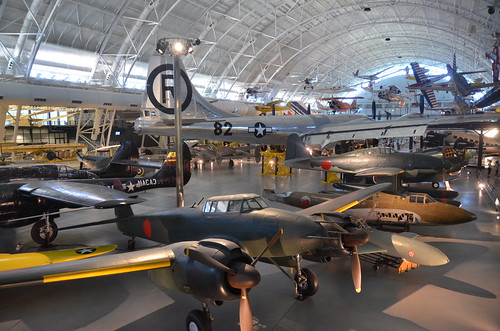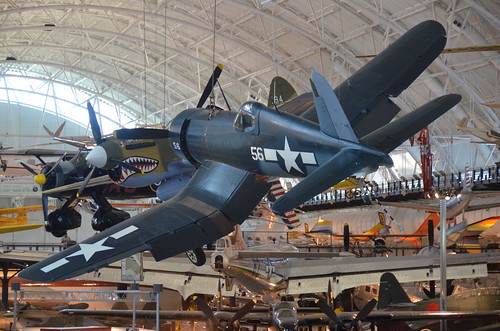Cool Dating Tips For Guys In Middle School images
Check out these dating tips for guys in middle school images:
Steven F. Udvar-Hazy Center: View over World War Two aviation wing, including Japanese planes and B-29 Enola Gay

Image by Chris Devers
See more photos of this, and the Wikipedia article.
Details, quoting from Smithsonian National Air and Space Museum: Steven F. Udvar-Hazy | Nakajima J1N1-S Gekko (Moonlight) IRVING:
Originally designed as a three-seat, daylight escort fighter plane by the Nakajima Aeroplane Company, Ltd., and flown in 1941, the IRVING was modified as a night fighter in May of 1943 and shot down two American B-17 bombers to prove its capability. The Gekko (meaning moonlight) was redesigned to hold only two crewmen so that an upward firing gun could be mounted where the observer once sat. Nearly five hundred J1N1 aircraft, including prototypes, escort, reconnaissance, and night fighters were built during World War II. A sizeable number were also used as Kamikaze aircraft in the Pacific. The few that survived the war were scrapped by the Allies.
This J1N1 is the last remaining in the world. It was transported from Japan to the U.S. where it was flight tested by the U.S. Army Air Forces in 1946. The Gekko then flew to storage at Park Ridge, IL, and was transferred to the Smithsonian Institution. The restoration of this aircraft, completed in 1983, took more than four years and 17,000 man-hours to accomplish.
Transferred from the United States Air Force.
Manufacturer:
Nakajima Hikoki K. K.
Date:
1942
Country of Origin:
Japan
Dimensions:
Overall: 15ft 1 1/8in. x 41ft 11 15/16in., 10670.3lb., 55ft 9 5/16in. (460 x 1280cm, 4840kg, 1700cm)
Materials:
All-metal, monocoque construction airplane
Physical Description:
Twin-engine, conventional layout with tailwheel-type landing gear.
Armament: (2) 20 mm fixed upward firing cannon
Engines: (2) Nakajima Sakae 21 (NK1F, Ha35- 21) 14- cylinder air-cooled radial 1,130 horsepower (metric)
• • • • •
See more photos of this, and the Wikipedia article.
Details, quoting from Smithsonian National Air and Space Museum: Steven F. Udvar-Hazy | Boeing B-29 Superfortress "Enola Gay":
Boeing’s B-29 Superfortress was the most sophisticated propeller-driven bomber of World War II and the first bomber to house its crew in pressurized compartments. Although designed to fight in the European theater, the B-29 found its niche on the other side of the globe. In the Pacific, B-29s delivered a variety of aerial weapons: conventional bombs, incendiary bombs, mines, and two nuclear weapons.
On August 6, 1945, this Martin-built B-29-45-MO dropped the first atomic weapon used in combat on Hiroshima, Japan. Three days later, Bockscar (on display at the U.S. Air Force Museum near Dayton, Ohio) dropped a second atomic bomb on Nagasaki, Japan. Enola Gay flew as the advance weather reconnaissance aircraft that day. A third B-29, The Great Artiste, flew as an observation aircraft on both missions.
Transferred from the United States Air Force.
Manufacturer:
Boeing Aircraft Co.
Martin Co., Omaha, Nebr.
Date:
1945
Country of Origin:
United States of America
Dimensions:
Overall: 900 x 3020cm, 32580kg, 4300cm (29ft 6 5/16in. x 99ft 1in., 71825.9lb., 141ft 15/16in.)
Materials:
Polished overall aluminum finish
Physical Description:
Four-engine heavy bomber with semi-monoqoque fuselage and high-aspect ratio wings. Polished aluminum finish overall, standard late-World War II Army Air Forces insignia on wings and aft fuselage and serial number on vertical fin; 509th Composite Group markings painted in black; "Enola Gay" in black, block letters on lower left nose.
Steven F. Udvar-Hazy Center: Vought F4U-1D Corsair, with P-40 Warhawk in background

Image by Chris Devers
Quoting Smithsonian National Air and Space Museum | Vought F4U-1D Corsair :
By V-J Day, September 2, 1945, Corsair pilots had amassed an 11:1 kill ratio against enemy aircraft. The aircraft’s distinctive inverted gull-wing design allowed ground clearance for the huge, three-bladed Hamilton Standard Hydromatic propeller, which spanned more than 4 meters (13 feet). The Pratt and Whitney R-2800 radial engine and Hydromatic propeller was the largest and one of the most powerful engine-propeller combinations ever flown on a fighter aircraft.
Charles Lindbergh flew bombing missions in a Corsair with Marine Air Group 31 against Japanese strongholds in the Pacific in 1944. This airplane is painted in the colors and markings of the Corsair Sun Setter, a Marine close-support fighter assigned to the USS Essex in July 1944.
Transferred from the United States Navy.
Manufacturer:
Vought Aircraft Company
Date:
1940
Country of Origin:
United States of America
Dimensions:
Overall: 460 x 1020cm, 4037kg, 1250cm (15ft 1 1/8in. x 33ft 5 9/16in., 8900lb., 41ft 1/8in.)
Materials:
All metal with fabric-covered wings behind the main spar.
Physical Description:
R-2800 radial air-cooled engine with 1,850 horsepower, turned a three-blade Hamilton Standard Hydromatic propeller with solid aluminum blades spanning 13 feet 1 inch; wing bent gull-shaped on both sides of the fuselage.
• • • • •
Quoting Smithsonian National Air and Space Museum | Curtiss P-40E Warhawk (Kittyhawk IA):
Whether known as the Warhawk, Tomahawk, or Kittyhawk, the Curtiss P-40 proved to be a successful, versatile fighter during the first half of World War II. The shark-mouthed Tomahawks that Gen. Claire Chennault’s "Flying Tigers" flew in China against the Japanese remain among the most popular airplanes of the war. P-40E pilot Lt. Boyd D. Wagner became the first American ace of World War II when he shot down six Japanese aircraft in the Philippines in mid-December 1941.
Curtiss-Wright built this airplane as Model 87-A3 and delivered it to Canada as a Kittyhawk I in 1941. It served until 1946 in No. 111 Squadron, Royal Canadian Air Force. U.S. Air Force personnel at Andrews Air Force Base restored it in 1975 to represent an aircraft of the 75th Fighter Squadron, 23rd Fighter Group, 14th Air Force.
Donated by the Exchange Club in Memory of Kellis Forbes.
Manufacturer:
Curtiss Aircraft Company
Date:
1939
Country of Origin:
United States of America
Dimensions:
Overall: 330 x 970cm, 2686kg, 1140cm (10ft 9 15/16in. x 31ft 9 7/8in., 5921.6lb., 37ft 4 13/16in.)
Materials:
All-metal, semi-monocoque
Physical Description:
Single engine, single seat, fighter aircraft.

Comments are closed.